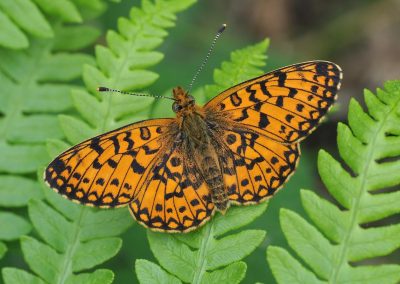In Laughton Greenwood we are proud of our Giant Oaks and the large numbers of young English oaks growing all over the wood. But in amongst them we also have a European species that can gradually do damage to our oaks. The Turkey oak (Quercus cerris) is a deciduous broadleaf tree that can reach a height of 30 metres.
Native to southeast Europe and Asia Minor, the Turkey Oak is widely planted in much of Europe. It was introduced to the UK in the 18th century. You’ll find it in parks, gardens, woodlands and along roadsides. It can set seed and has become naturalised here.
Opinions differ on Turkey Oaks. They are not as valuable to native wildlife as English and Sessile Oaks, but much faster growing. They are also a host of the knopper oak gall wasp which is a pest that damages English oaks. The timber isn’t much use as it tends to splinter and, when used as firewood, it spits. (It’s OK in a Wood burner). The Turkey Oak does provide some benefits. They are rather attractive, which accounts for why they were brought to the UK as an ornamental tree.
The big concern with Turkey Oaks is that they hybridise with native English Oaks. Current advice from The Woodland Trust is to stop the growth of Turkey Oaks so that our English oak and Sessile Oak can grow well.
Therefore we are going to try gradually to reduce the number of Turkey Oaks in Laughton Greenwood. In August our volunteers will try to identify the trees, how many do we have and where are they.
How to identify Turkey Oaks?
The leaves of the Turkey oak are dark green and variable in shape. Some have elaborate and pointed lobes, while others have rounded, simple lobes. When you touch them, they feel rough and thick, with a shiny upper surface and a felted underside. Once you get the measure of them you will find them easy to distinguish from our native Oaks.
Like our native Oaks the fruit is an acorn but Turkey Oaks can be distinguished from native Oaks by their “hairy” acorn cups, which look like a hats made of moss and are covered in fine hairs. The acorns are eaten by birds and small mammals, although they are said to be less palatable than native oak acorns.
The Turkey Oak hosts the gall wasp Andricus quercuscalicis, whose larvae invade the acorns of native British Oaks. You can see the damage done to native Oaks’ acorns quite easily – they are all knobbly and deformed. This is why some arboriculturists are very opposed to Turkey Oaks and have tried to eradicate them.
On Sunday 4th August, as the focus of our monthly volunteering session, we are intending to search Laughton Greenwood for Turkey Oaks and will ringbark some of them so that they die off. This will leave useful standing timber, which is wonderful habitat for nesting birds, woodpeckers, insects and fungi.
Come with us on a ‘Turkey Oak hunt’ 4th August, 10-12.30, to help us find out if our native Oaks have been affected yet. All welcome, if able to walk on rough terrain in the wood. Come with us and take a look!
Article written by Sue Redshaw, with thank to Woodland Trust for some of the information.




